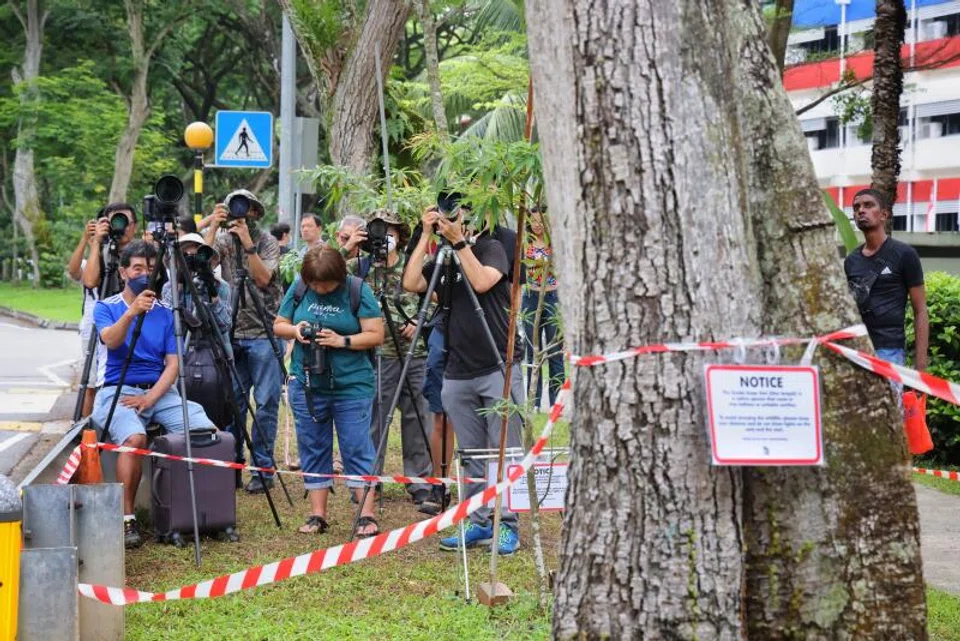Acres places Telok Blangah owlets higher in tree to help them learn to fly: 'This is a crucial phase'
The Animal Concerns Research and Education Society (Acres) has placed the two crowd-drawing owlets higher in the tree in Telok Blangah to help them learn to fly.
In a Facebook post on May 10, Acres said the the baby owls have fledged, meaning their wing feathers have grown large enough for flight.
"This is a crucial phase," said Acres, "where they will be hopping between branches, taking short flights between trees to strengthen their flight muscles. All that needs to happen under the supervision of their parents."
Acres appealed to people not to surround the area as they may scare off the owlets' parents.
"Last night, we placed the owlet as high up as we could on the tree. The idea is so the owl can be better hidden and have the chance to hop amongst branches without falling," said Acres.
It added that on May 9, Acres received calls that an owlet had fallen onto the ground and at least once on the road.
"Members of the public helped to carry the young owl onto the grass patch," said Acres in the post.
A video posted in the Nature Society Singapore Facebook group by a member named Art Toh showed someone returning to the nest an owlet that had fallen out at about 2am on May 8.
Mr Toh wrote in the post: "Kudos to this guy and those who helped. So please, those who knows next to nothing about birding, please do not paint all birders as irresponsible show-offs.
"To most birders, it's an undying passion to document wildlife in its natural state which contributes to better understanding of wildlife in the midst of our urban environment."
The Sunda scops owls have been drawing photographers and onlookers to the tree next to the bus stop near Block 28 Telok Blangah Rise since May 6.
The National Parks Board (NParks) told The Straits Times that it had cordoned off the area near the tree and installed signs to advise the public to maintain a safe distance.

"NParks would like to advise the public to appreciate wildlife from a distance and avoid disrupting their natural behaviours," said NParks' group director of wildlife management How Choon Beng.
"When photographing nesting birds, one should keep a distance to give them space and observe them in their natural state.
"Refrain from feeding or the use of artificial lures and calls to attract them and do not shine light or use flash photography as it may cause the birds to become stressed."
One video online shows police cars in the area.
Stomp has contacted the police for more info and understands that no crime was committed.

